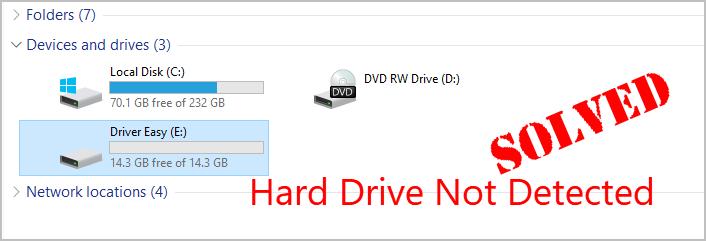
Try these fixes:
- Initialize your hard drive
- Change your hard drive letter and path
- Update your motherboard driver
- Check if your hard drive is enabled in BIOS
- Check if your data cable is damaged or unplugged
Solution 1: Initialize your hard drive
If your hard drive is a raw drive or corrupted, then you may not find it in Windows Explorer. You can solve it through initializing your hard drive. See how to do it:- On your keyboard, hold down the Windows logo key, then press R to bring up the Run box.
- Type diskmgmt.msc and press Enter.
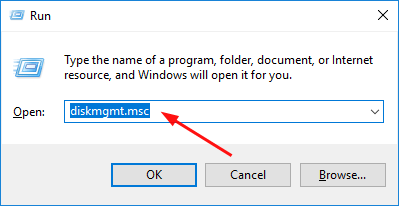
- You may probably find you hard drive at the bottom of the open window with the status Unallocated. Right-click on your hard drive to select New Simple Volume…
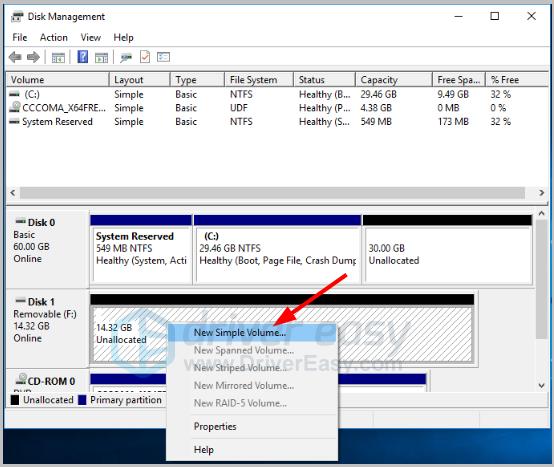
- Go on to follow the New Simple Volume wizard.
Solution 2: Change your hard drive letter and path
If your hard drive has not been set for a proper drive letter and path, it could not be detected either. Follow to change your hard drive letter and path:- On your keyboard, hold down the Windows logo key and press R to bring up the Run box.
- Type diskmgmt.msc and press Enter.

- Right-click on your hard drive, then select Change Letters and Paths…
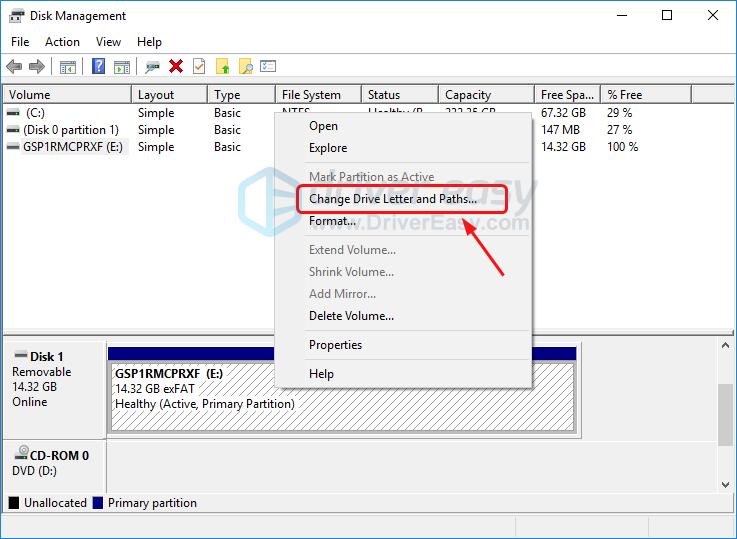
- Click Add or Change whichever is available according to the windows on your computer.
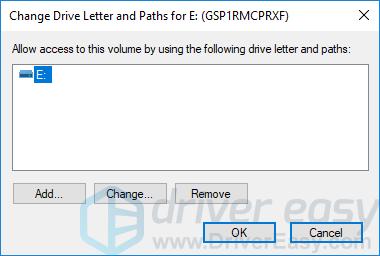
- Choose a letter for your hard drive from the drop down menu. Then click OK.
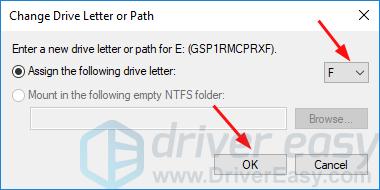
Solution 3: Update your motherboard driver
If your motherboard driver is out-of-date, your hard drive may not be detected either. So you can fix this problem by updating your motherboard driver. You can update your motherboard driver manually by going to the manufacturer’s website for your motherboard, and searching for the most recent correct driver. Be sure to choose the only driver that’s compatible with your Windows version. If you’re not comfortable playing with device drivers, we recommend using Driver Easy. It will automatically recognize your system and find the correct drivers for it. You don’t need to know exactly what system your computer is running, you don’t need to risk downloading and installing the wrong driver, and you don’t need to worry about making a mistake when installing. You can update your drivers automatically with either the FREE or the Pro version of Driver Easy. But with the Pro version it takes just 2 clicks:- Download and install Driver Easy.
- Run Driver Easy and click the Scan Now button. Driver Easy will then scan your computer and detect any problem drivers.
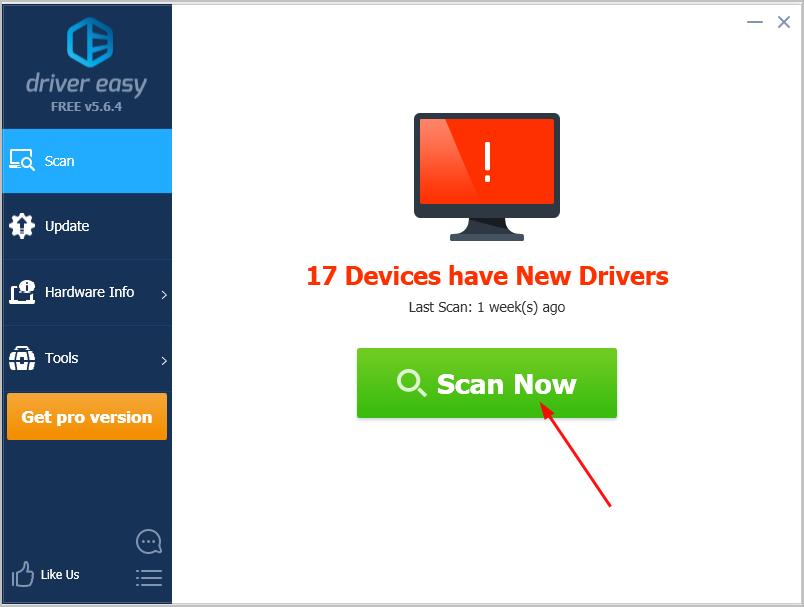
- Click Update All to automatically download and install the correct version of all the drivers that are missing or out of date on your system (this requires the Pro version – you’ll be prompted to upgrade when you click Update All).
Note: You can do it for free if you like, but it’s partly manual.
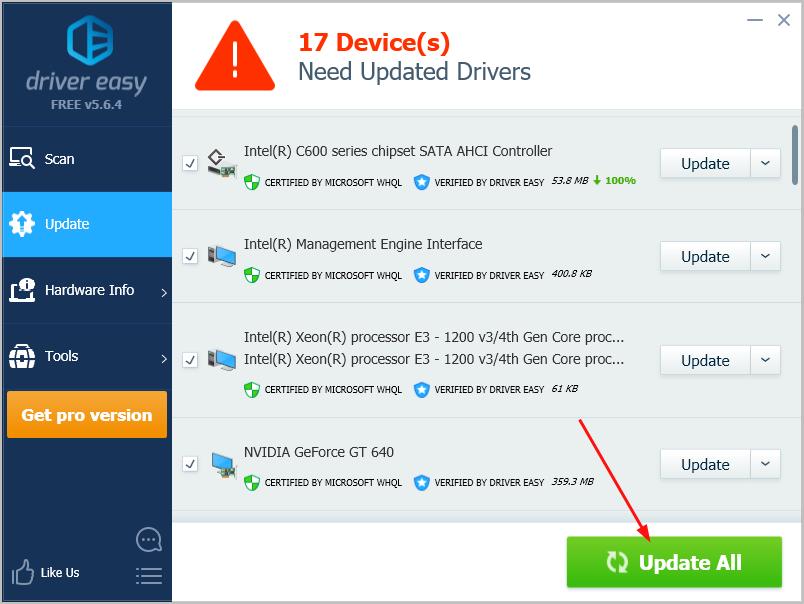
Solution 4: Check if your hard drive is enabled in BIOS
You hard drive is not detected could be also due to that it’s not enabled in your BIOS settings. See how to enable your hard drive in BIOS.- Restart your computer, then press the specific key to enter BIOS. Note: The common keys to enter BIOS are F1, F2, F10, Del, Esc, as well as key combinations like Ctrl+Alt+Esc. The specific key is showing up at the boot screen.
- You can then check the status of your hard drive or its controller in the specific section. If your hard drive is off or not selected, set it to on or tick it.
- Press F10 to save your settings and exit BIOS.
- Your computer will then boot into Windows system. Press the Windows logo key and E at the same time to open File Explorer to see if your hard drive is detected.
Solution 5: Check if your data cable is damaged or unplugged
Your hard drive not detected problem could also be due to the damaged, unplugged or wrong-connected data cable.If your internal disk isn’t detected, you need to open your computer case and make sure the SATA cable is connected well.
If your USB hard drive isn’t detected, you can try to connect your USB drive with another USB port to see if it could be detected by your computer. Is your hard drive successfully detected? Feel free to comment below with your own experiences and share this post if it helps.




